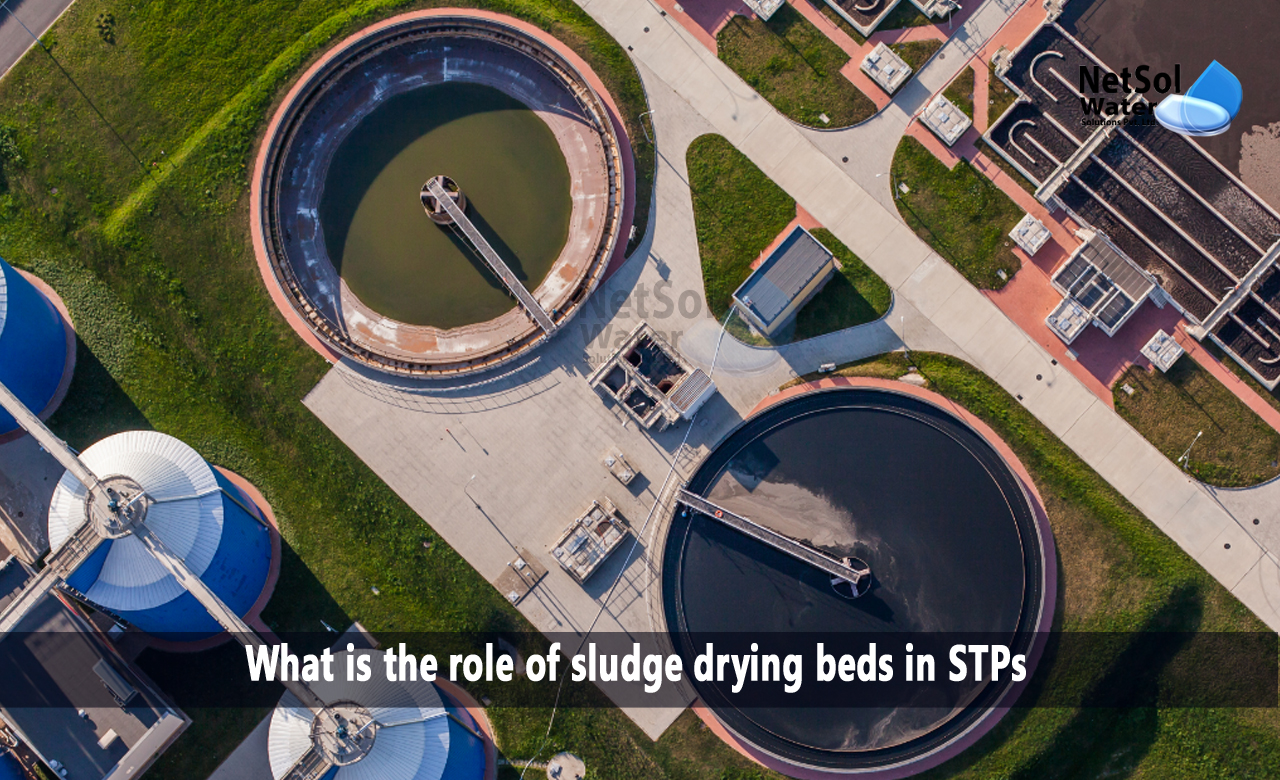The intermediate sludge treatment method known as sludge drying bed, involves letting the water in the sludge evaporate. It greatly decreases the sludge's volume and weight, to make recovery simpler.
What is the role of sludge drying beds in STPs?
Sludge drying beds' function in a sewage treatment plant is to offer the most straightforward technique of dewatering.
Sludge is dried using a combination of mechanical and natural drying processes. Small and medium-sized communities typically use Sludge drying beds.
How do sludge drying beds work?
An open bed of sand is covered with a slurry of digested sludge, which is left there until it dries. Drying is accomplished through a mixture of gravity drainage through the sand and evaporation. The water is gathered and pumped back to the plant's head, using a network of pipes installed beneath the sand. The so-called "sludge cake," after drying for roughly six weeks, may have a solids content of about 40%.
A pitchfork or a front-end loader can then be used to retrieve it from the sand. In cold or wet conditions, a glass cage may be constructed over the sand beds to speed up drying.
The availability of land, climate variables, the volume and make-up of the sludge and the choice of technology, will all be determined by these variables.
Operation and Maintenance of sludge drying beds
Due to variations in operating environments and energy costs, different sludge treatment technologies are applied in different nations. Although, conventional sludge drying is extremely straightforward, it needs to be operated and maintained by trained personnel, to ensure effective operation.
There is no need for electricity to use this technique. Application of sludge, desludging, drainage system control, and secondary treatment control to dry sludge are all included in O & M.
Advantages of sludge drying beds
1. low capital cost,
2. low energy consumption,
3. low to no chemical consumption,
4. low operator skill and attention required,
5. less sensitivity to sludge variability,
6. higher cake solids content than that of most mechanical methods.
Cost Considerations in sludge drying beds
Instead of being energy-intensive, the standard sludge treatment method is more land-intensive. The size of the sludge drying bed varies depending on the volume of wastewater to be treated.
In terms of the amount of land needed and subsequent building expenses, the capital expenditure for this treatment facility is the largest. The labour hours, fuel energy, back washing, annual materials, and maintenance parts are all included in the O & M requirements.
Conclusion
Sludge drying beds facilitate sludge dewatering by allowing the liquid, to both flow under gravity through a porous material on which the sludge sits, as well as to evaporate under ambient circumstances. A permeable bed made up of layers of sand and gravel, is covered with a thin (up to 300 mm) layer of sludge.
How can we assist?
Netsol Water is the best producer of water and wastewater treatment systems. We have created a number of sludge drying techniques that enable the sludge to be recovered for a variety of uses, including fertilizers, by-products for composting, or fuel for incinerator plants.
Contact us at +91 9650608473 or enquiry@netsolwater.com for expert advice.



